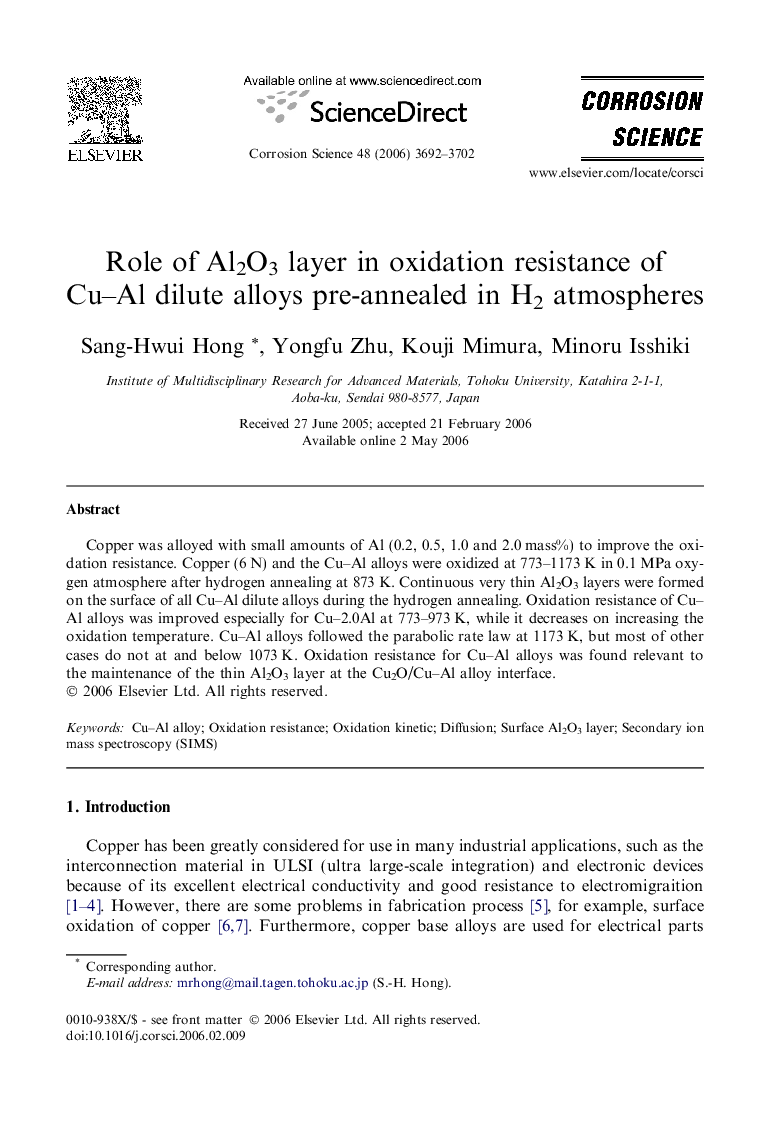| Article ID | Journal | Published Year | Pages | File Type |
|---|---|---|---|---|
| 1472313 | Corrosion Science | 2006 | 11 Pages |
Abstract
Copper was alloyed with small amounts of Al (0.2, 0.5, 1.0 and 2.0 mass%) to improve the oxidation resistance. Copper (6 N) and the Cu–Al alloys were oxidized at 773–1173 K in 0.1 MPa oxygen atmosphere after hydrogen annealing at 873 K. Continuous very thin Al2O3 layers were formed on the surface of all Cu–Al dilute alloys during the hydrogen annealing. Oxidation resistance of Cu–Al alloys was improved especially for Cu–2.0Al at 773–973 K, while it decreases on increasing the oxidation temperature. Cu–Al alloys followed the parabolic rate law at 1173 K, but most of other cases do not at and below 1073 K. Oxidation resistance for Cu–Al alloys was found relevant to the maintenance of the thin Al2O3 layer at the Cu2O/Cu–Al alloy interface.
Keywords
Related Topics
Physical Sciences and Engineering
Materials Science
Ceramics and Composites
Authors
Sang-Hwui Hong, Yongfu Zhu, Kouji Mimura, Minoru Isshiki,
